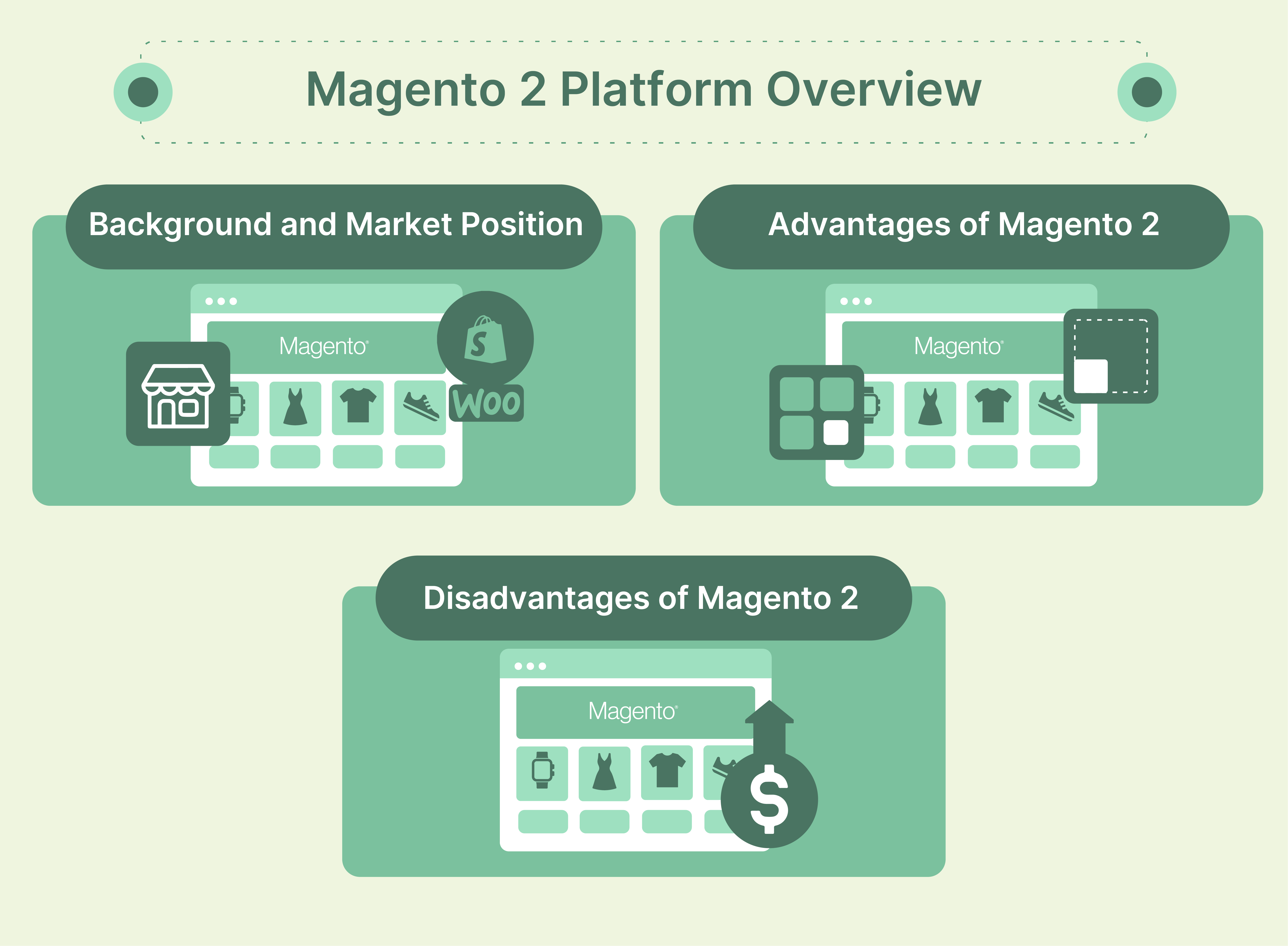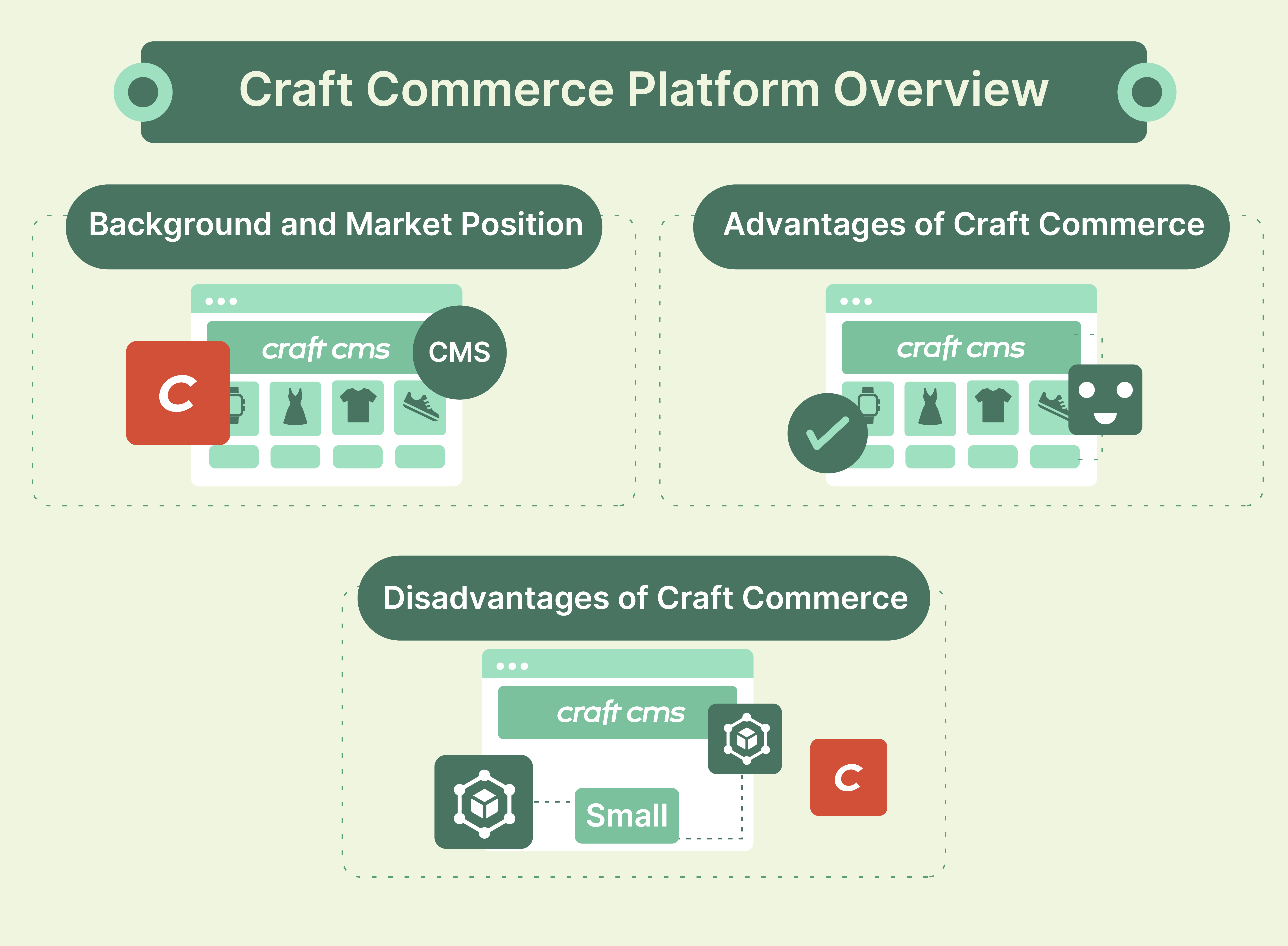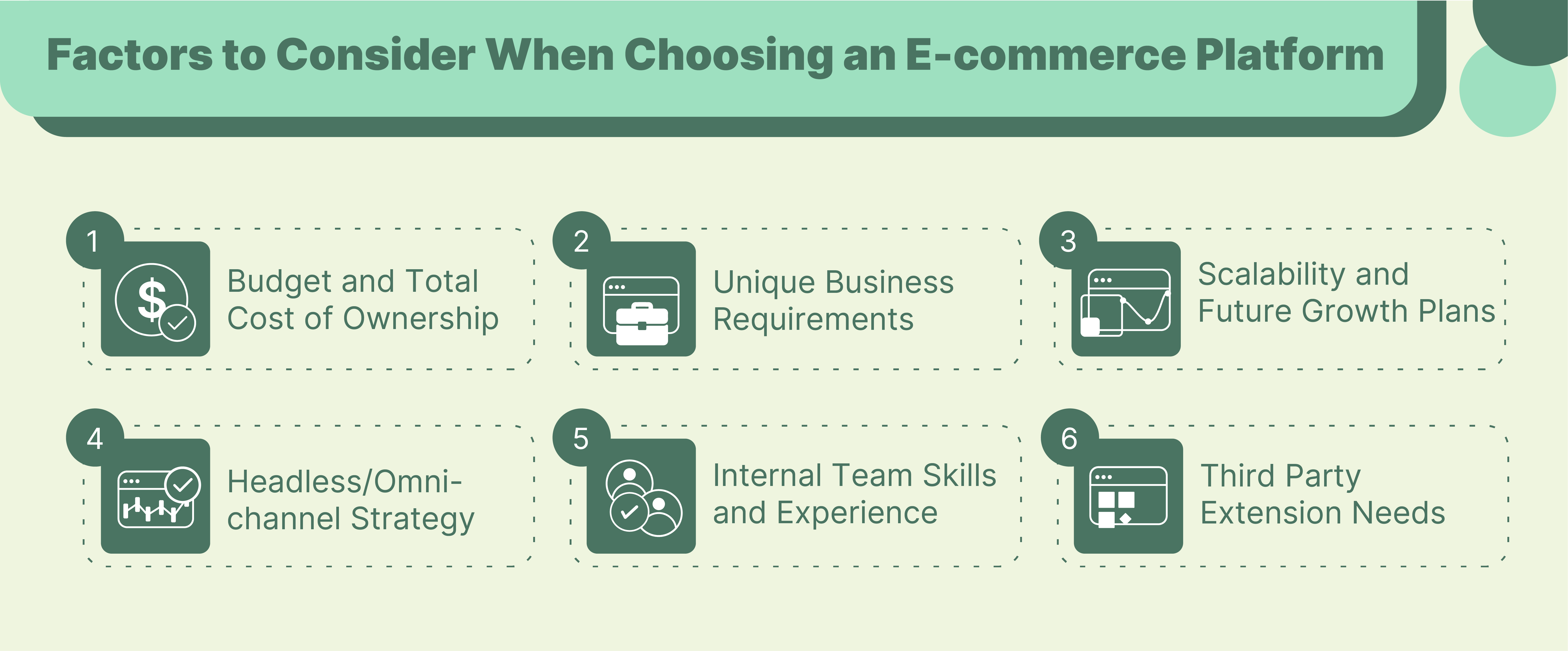
Magento vs Craft Commerce: Best Platform in 2024
Are you struggling to choose the right e-commerce platform in 2024? Magento vs Craft Commerce is a comparison of ecommerce platforms based on distinct strengths, business models, and needs. In this article, we will explain the features, benefits, and differences between Magento 2 and Craft Commerce.
Key Features
-
Explore the [differences between Magento](Magento vs. osCommerce: Which is Better?) for large-scale and Craft Commerce.
-
Understand Craft Commerce's content management integrated with Craft CMS versus Magento's CMS.
-
Learn about Magento's scalability and higher technical demands for larger, complex businesses.
-
Compare the cost implications of Magento's ongoing fees with Craft Commerce's one-time fee.
-
Evaluate each platform's customization options and ecommerce features.
Magento 2 Platform Overview

1. Background and Market Position
Magento is one of the most popular ecommerce platforms globally. It powers over 250,000 online stores across the world.
It competes with other major platforms like WooCommerce, Shopify, and BigCommerce. Magento has two main editions:
- Magento Open Source: It is a free version that is suitable for small to medium businesses.
- Magento 2 Enterprise Edition: It is the premium version with advanced features for large businesses. It requires an annual licensing fee.
2. Advantages of Magento 2
-
Magento 2 ships with a vast array of ecommerce features. It reduces the need for third-party extensions and customizations.
-
Magento 2 is highly scalable and can handle large product catalogs, high traffic, and complex requirements.
-
The platform has a mobile-responsive design that adjusts the store layout for an optimal experience.
-
Magento 2 has been designed with SEO in mind. It generates SEO-friendly URLs and provides tools for modifying product pages and descriptions. It automatically creates XML sitemaps and avoids content duplication.
-
There is a vast marketplace of third-party extensions and plugins available for Magento 2 to extend its functionality.
3. Disadvantages of Magento 2
-
Magento 2 has a relatively steep learning curve compared to some other ecommerce platforms.
-
Magento 2 can have a higher total cost of ownership. It is because of licensing fees, hosting requirements, developer costs, and maintenance.
-
Setting up a new Magento 2 store from scratch can be more time-consuming. It is compared to some SaaS ecommerce solutions.
Craft Commerce Platform Overview

1. Background and Market Position
-
Craft Commerce is a first-party ecommerce platform built specifically for the Craft CMS system.
-
It allows merchants to manage products, orders, and the online store alongside their website.
-
Its market position is more niche. It is a good option for websites prioritizing user experiences and content integration.
2. Advantages of Craft Commerce
-
A key advantage of Craft Commerce is its integration with the Craft CMS. It allows the creation of content-driven shopping experiences where products can be tied to blog posts, videos, etc.
-
Craft Commerce inherits the user-friendly admin interface from Craft CMS. It makes it easier for non-technical users to manage products, process orders, and handle other tasks.
-
Development teams can build online stores faster. It can be done without dealing with restrictive themes or having to override default functionality.
-
Craft Commerce can have a lower total cost of ownership compared to subscription-based SaaS platforms. It is due to its commercial pricing model, which includes a one-time fee and no recurring licenses.
3. Disadvantages of Craft Commerce
-
Craft Commerce has a smaller ecosystem of extensions available compared to bigger platforms.
-
It is less battle-tested at large enterprise scales. It cannot handle massive product catalogs and high traffic.
-
More advanced functionality, like pricing rules, subscriptions, etc. It may require custom development work.
Key Features of Magento & Craft Commerce
| Feature | Magento 2 | Craft Commerce |
|---|---|---|
| Product Management | - Features like product types, attribute sets, inventory management, product alerts | - Unlimited products/variants, custom product fields, matrix for managing variations |
| Order Management | - Guest checkout, multiple shipping addresses, order status workflows, invoicing, shipment tracking, credit memos | - Custom order statuses, order email notifications, order PDF exports |
| Promotions | - Catalog price rules, cart price rules, coupon codes, free shipping promotions, email reminder rules | - Percentage, fixed amount, buy X, get Y free discounts, per-item discounts, and discount code management |
| Content Management | - Magento 2 WYSIWYG product descriptions, limited content editing capabilities | - Deep integration with powerful Craft CMS for content blocks, custom product content fields |
| Checkout Experience | - One-page checkout, saved carts, shipping estimate | - Ability to fully customize checkout flow and experience |
| Multi-Store | - Supported in Enterprise edition, share cart across stores | Multi-store management with separate product catalogs per store |
| Multi-Currency | - Supported in Enterprise edition | Multi-currency pricing per store location |
| B2B Features | - Company accounts, quick order forms, quote management, custom catalogs | Limited features require custom development |
| Payment Gateways | - PayPal, Braintree, Authorize.Net, and popular gateways supported |
First-party Stripe integration, third-party gateways like PayPal via plugins |
| Reporting | Advanced reporting dashboard, product, marketing, customer, and statistics reports | Basic sales reporting requires more customization |
| Extensibility | Magento Marketplace with various third-party extensions | Growing plugin ecosystem, ability to build custom functionality |
Factors to Consider When Choosing an E-commerce Platform

1. Budget and Total Cost of Ownership
-
Magento: It is a free Open Source edition. The Enterprise edition requires annual licensing fees starting around $22,000/year. Hosting, development, and ongoing maintenance costs for Magento can also be a lot.
-
Craft Commerce: It has a one-time fee of $999 with no recurring licensing costs. Some custom development may still be needed. The total cost of ownership tends to be lower for Craft Commerce for smaller to mid-sized stores.
2. Unique Business Requirements
Assess your specific ecommerce requirements. It could be product types, pricing rules, order workflows, content needs, etc.
-
Magento: It provides extensive functionality for complex product catalogs, promotions, Magento B2B tools, and more.
-
Craft Commerce: It is more streamlined but integrated with the powerful Craft CMS. It makes it ideal for stores requiring unique user experiences and blending of products with marketing content.
3. Scalability and Future Growth Plans
-
Magento: It is built to scale to an enterprise level company. It allows scaling databases, using caching tools like Varnish, and integrating performance testing tools.
-
Craft Commerce: It may be less proven at the largest enterprise scales compared to Magento. However, it can effectively support most small to mid-market growth plans.
4. Headless/Omnichannel Strategy
Both platforms are making investments in headless/PWA capabilities for omnichannel experiences.
-
Magento: It has existing PWA studio tools. If a headless, Magento 2 API-driven architecture is a priority now, Magento may have an edge.
-
Craft Commerce: It can be a good fit for headless, too, with some custom development. Craft Commerce's roadmap includes expanded API coverage.
5. Internal Team Skills and Experience
-
Magento: If your team has Magento development skills, sticking with that platform may be preferable.
-
Craft Commerce: The admin and Twig templating have a shorter learning curve. It is especially for teams familiar with the Craft CMS ecosystem.
6. Third Party Extension Needs
-
Magento: It has a vast marketplace of third-party extensions for added functionality. If you need extensive third-party integrations, the Magento ecosystem may serve you better currently.
-
Craft Commerce: While Craft Commerce's ecosystem is growing, it is still relatively smaller. The extensibility allows custom development of missing functionality.
FAQs
1. What are the main differences between Magento and Craft Commerce?
Magento offers extensive features and scalability for large businesses. At the same time, Craft Commerce integrates with Craft CMS for content-focused online shops.
2. Should I choose Craft Commerce or Magento for a customizable and scalable shopping cart solution?
Choose Magento for a scalable and customizable shopping cart. Opt for Craft Commerce if you prioritize ease of use and content management.
3. Can Craft Commerce meet compliance standards such as SSL certificate and PCI DSS for my online shop?
Yes, Craft Commerce supports compliance standards like SSL and PCI DSS, ensuring data security for your online shop.
4. Why should I choose Craft Commerce over Magento if I run a content-heavy website?
Choose Craft Commerce for content-heavy sites. It offers powerful content integration that complements ecommerce functions.
5. How can I evaluate which platform would save more time and money for my specific needs?
Magento is ideal for complex, scalable needs. Craft Commerce is cost-effective for mid-sized, content-driven shops.
Summary
The Magento vs Craft Commerce comparison focuses on unique features and services offered. In this article, we explained the key features, advantages, disadvantages, and conditions for choosing the best e-commerce platform. Here is a short recap:
- Magento 2 is for large-scale online stores requiring extensive customization and scalability.
- Craft Commerce is best suited for integrating ecommerce with content-rich sites.
- Magento provides a lot of ecommerce functionalities. Craft Commerce excels in content management.
- Magento demands higher technical expertise and costs. Craft Commerce is more user-friendly and cost-effective.
- Select Magento for growth and complex needs. Craft Commerce for a content-focused, streamlined approach.
Choose managed Magento hosting over self-hosting Craft Commerce for a faster and more scalable website.



